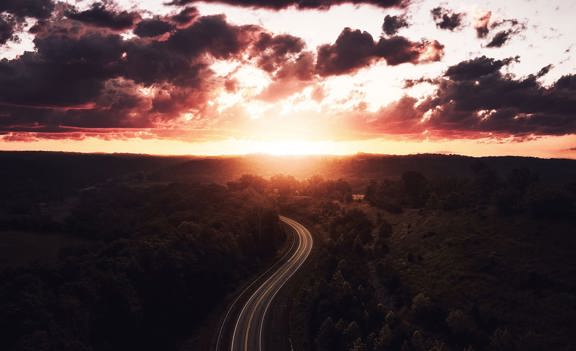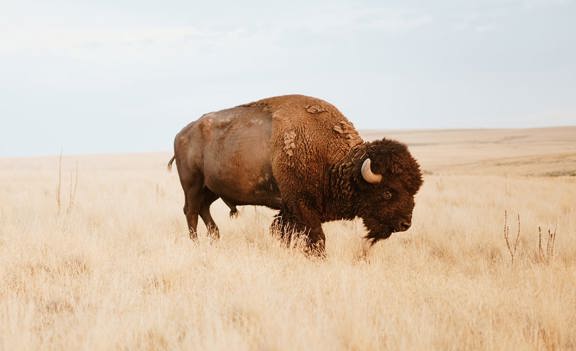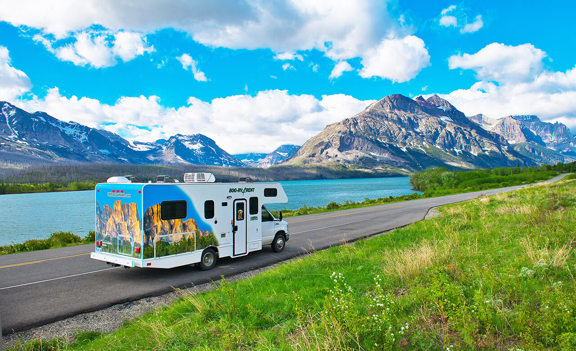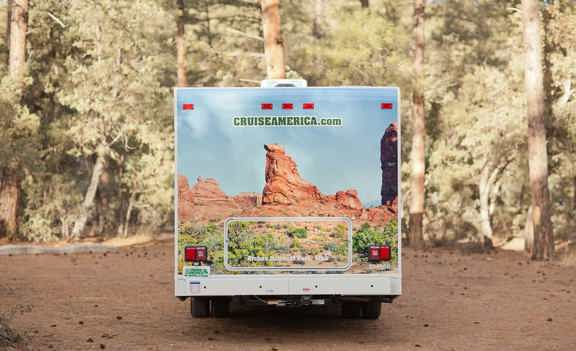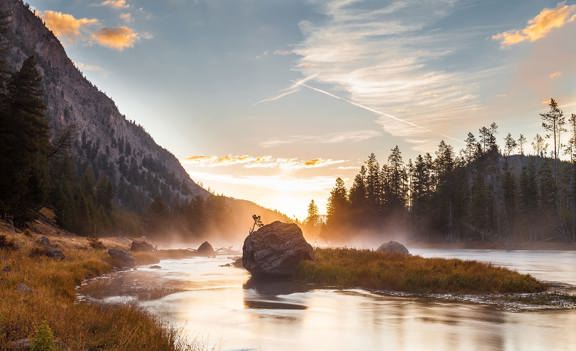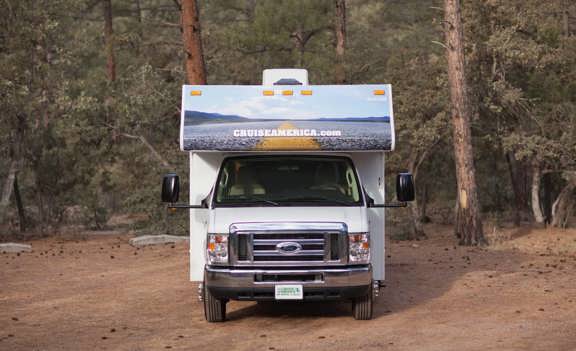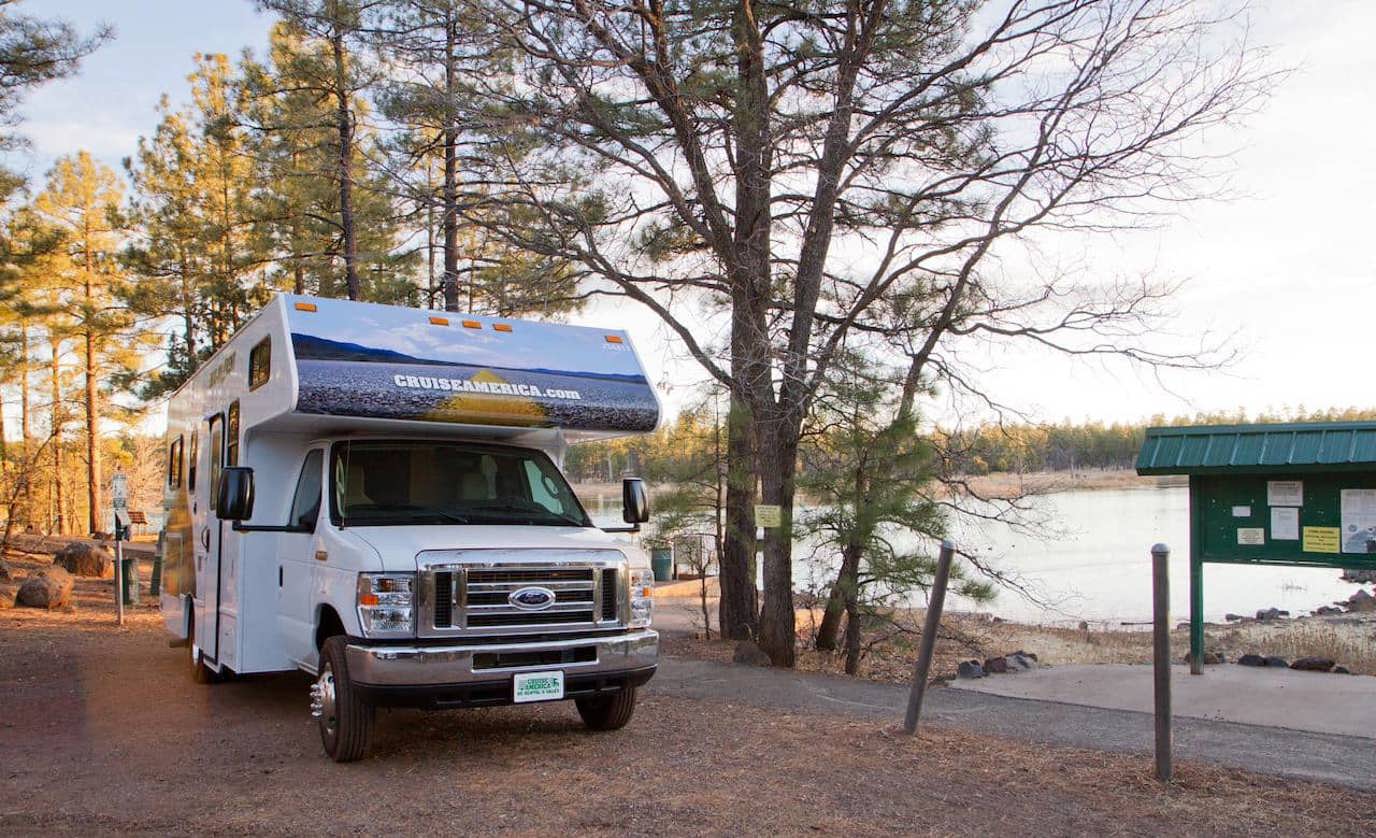
Ready to hit the road in an RV for the first time? Whether you're taking a weekend retreat or planning an extended road trip, RV travel is an exciting way to explore the world around you. But for beginners, it can also feel a bit overwhelming. Don’t worry—we’ve got you covered.
This guide shares the most important RV advice for beginners, from what to pack and how to prep, to common mistakes to avoid. With these tips, you’ll feel confident and ready to enjoy your trip stress-free. Let’s dive in!
Introduction to the RV Lifestyle
The RV lifestyle is all about freedom, adventure, and discovering unique places at your own pace. Whether you’re dreaming of full-time RV living or just planning a few weekend getaways, RVing opens up a world of possibilities. You can wake up to mountain views, camp by the beach, or explore national parks—all from the comfort of your own rolling home.
For many, the appeal lies in the flexibility: you choose where to go, when to move, and how long to stay. There’s an RV class and style for every traveler, from solo adventurers to families and retirees. Embracing the RV lifestyle means learning new skills, meeting fellow campers, and making memories on the open road.
RV Anxiety Is Normal: Here's How to Handle It
If you’re feeling nervous about driving or traveling in an RV for the first time, you’re not alone. Many beginners experience “RV anxiety”—worry about handling a large vehicle, managing the unknown, or being away from the comforts of home. Fortunately, there are ways to ease that anxiety and build confidence.
Tips to manage RV travel anxiety:
-
Take it slow. Start with short trips close to home to get comfortable.
-
Practice makes perfect. Spend time in an empty parking lot practicing turns, reversing, and parking.
-
Lean on checklists. Create packing and setup checklists to stay organized and reduce mental load.
-
Watch tutorials. YouTube videos and your rental company’s walk-throughs are invaluable.
-
Have a backup plan. Knowing where nearby campgrounds or rest stops are can reduce stress.
Dealing With Motion Sickness in an RV
Some travelers may experience car sickness while riding in an RV, especially if seated in the back. Here's how to help avoid that queasy feeling:
-
Sit near the front. Motion is less noticeable closer to the driver’s seat.
-
Look out the window. Keep your eyes on the horizon instead of screens or books.
-
Take breaks. Stop regularly for fresh air and to stretch your legs.
-
Avoid heavy meals before travel. Eat light snacks to keep your stomach settled.
-
Use remedies. Ginger chews, acupressure wristbands, or over-the-counter motion sickness medications can help.
With a little preparation and a calm mindset, you'll find that RV travel is not only manageable—it’s enjoyable.
1. Understand Your RV Before You Hit the Road
Before you even turn the key, take time to get familiar with your RV rental. Whether it’s a compact van or a larger Class C motorhome, understanding how the systems work will give you peace of mind and reduce surprises. Getting to know your new RV can feel overwhelming at first, but it’s essential for a smooth and enjoyable trip.
Key things to understand:
-
Driving and parking: RVs are larger than typical vehicles. Practice turning, backing up, and using your mirrors.
-
Water systems: Most RVs come equipped with black and gray water tanks for waste management. Know how to hook up and disconnect fresh water, gray water, and black water tanks. You’ll also need to locate a dump station at campgrounds or RV parks to empty your tanks during your trip.
-
Electric and propane: Learn how your RV uses shore power, the generator, and propane for appliances like the fridge and stove.
-
Interior systems: Test the lights, air conditioner, heater, and slide-outs (if any).
RV Classes and Types: Which One Fits You?
Choosing the right RV is a big step toward a successful trip. There are several RV classes and types, each with its own perks. Class A motorhomes are the largest, offering spacious interiors, lots of storage space, and luxury features—perfect for full-time RVers or families who want all the comforts of home.
Class B motorhomes, often called camper vans, are compact and easy to drive, making them ideal for couples or solo travelers who want to explore unique places without the hassle of a big rig.
Class C motorhomes strike a balance, built on a truck chassis with a sleeping area over the cab, offering a good mix of space and maneuverability.
If you prefer to tow your home, travel trailers and fifth wheels are great options. Travel trailers come in a variety of sizes and can be towed by many vehicles, while fifth wheels require a pickup truck or SUV with a hitch but offer even more living space and storage. Think about how much space you need, how many people (and pets) you’ll bring, and whether you plan to camp for short trips or embrace long periods on the road. No matter which RV you choose—motorhome, trailer, or fifth wheel—you’ll find a style that fits your travel dreams and lifestyle.
Buying and Renting an RV: What Beginners Need to Know
If you’re new to the RV world, deciding whether to buy or rent can feel a bit tricky. Renting an RV for your first few trips is a smart way to test out different models and see what suits your needs before making a big investment. Rental companies often include essentials and offer support, making your first trip less stressful. If you fall in love with the RV lifestyle and decide to buy, remember to factor in the total cost—not just the purchase price. You’ll need to budget for RV insurance, regular maintenance, storage fees, and sometimes an annual fee at RV parks or campgrounds if you plan to keep your rig there.
Research different RV models, read reviews, and talk to other RVers to get honest feedback. Consider how often you’ll use your RV, the types of parks and campgrounds you want to visit, and the cost of ownership versus renting. Many full-time RVers find that buying makes sense in the long run, while occasional campers may prefer the flexibility of renting. Either way, understanding the costs and options will help you make the best choice for your trips.
2. Pack Smart (But Not Too Much)
Packing for an RV trip is all about balance: you want to be prepared but not weighed down. Space is limited, so pack only the essentials.
Essentials to bring:
-
Linens and bedding: Sheets, pillows, sleeping bags, and towels
-
Kitchenware: Dishes, pans, utensils, coffee maker, and dish soap
-
Clothing: Layered, weather-appropriate outfits
-
Toiletries: Biodegradable soap, shampoo, toothbrush, RV-friendly toilet paper
-
Drinking water: Bring enough drinking water for your trip, or pack a portable water filter to ensure safe water at all campsites, especially in remote areas
-
Outdoor gear: Camping chairs, bug spray, flashlight/headlamp
-
Entertainment: Books, games, or downloaded shows for downtime
Pro tip: Pack in soft-sided bags to save space and make loading easier.
3. Choose the Right Campgrounds (and Reserve Ahead)
Your campground can make or break your RV experience. As a beginner, consider staying at an RV park, as many RV parks offer amenities and services that are especially helpful for beginners. Choose well-rated, RV-friendly campgrounds or parks with full or partial hookups.
Look for:
-
Electric hookups (30 or 50 amp)
-
Water and sewer connections
-
Dump station (for emptying your tanks)
-
Pull-through sites (easier than backing in)
-
Restrooms and laundry (if needed)
-
Pet-friendliness (if you’re bringing a furry friend)
Book your sites in advance, especially during summer or holiday weekends. Sites fill up quickly in national parks and other popular areas.
Private Campgrounds: What to Expect
Private campgrounds and RV parks can make a big difference in your camping experience, especially for beginners. Unlike some public sites, private campgrounds often offer a wide range of amenities—think full hookups for water, electricity, and sewer, clean restrooms, laundry facilities, and sometimes even pools or playgrounds. Many private campgrounds are located near national parks or popular attractions, making them a convenient base for exploring.
When choosing a private campground, check what’s included in the nightly or annual fee. Some offer discounts for longer stays, which is great for full-time or seasonal RVers. Read reviews and browse campground websites to get a sense of the atmosphere and amenities. Whether you’re looking for a quiet retreat or a resort-style park with lots of activities, private campgrounds offer something for every type of RV trip—and can help make your first time camping a breeze.
4. Budget for Hidden Costs
It’s not just the rental price—there are a few additional costs to consider:
-
Mileage charges (usually charged per mile driven)
-
Generator usage (hourly rate)
-
Campground fees (varies by location)
-
Propane refills (for stove and heater)
-
Fuel (RV gas tanks are larger)
Make a rough trip budget including these variables. For example, budgeting for a two-week RV trip can help you anticipate fuel, campground, and supply costs. Taking a nomad bootcamp course or a budgeting course for RVers can also help new travelers plan for all expenses.
5. Know the Common Rookie Mistakes
Avoiding a few beginner pitfalls will make your trip much smoother:
-
Overpacking: You don’t need everything—keep it simple.
-
Forgetting to level the RV: Use leveling blocks so you don’t sleep on a slant.
-
Not securing items while driving: Lock cabinets, tie down gear, and close latches.
-
Ignoring tank levels: Regularly monitor your water and waste tank gauges.
-
Driving too far in one day: Keep drive days under 5 hours to avoid fatigue.
6. Stay Flexible, But Have a Plan
Part of the fun of RV travel is spontaneity—but having a rough plan helps avoid stress. Use an itinerary to guide your trip, but allow room for last-minute changes.
Plan for:
-
Where you’ll sleep each night
-
Nearby fuel stations
-
Grocery and supply stops
-
Activities in the area
Be prepared for unexpected experiences and changes along the way, as weather, road conditions, and new opportunities can arise. Always check road conditions before and during your trip to ensure safe and smooth travel.
Don’t overbook your days. Remember: you’re here to enjoy the journey, not rush or overbook yourself.
7. Practice Safety and Courtesy
RV etiquette is a real thing. Here’s how to be a great campground neighbor and keep your trip safe:
-
Keep noise down, especially at night
-
Pick up after pets
-
Don’t walk through other campsites
-
Follow speed limits in parks and campgrounds
-
Use wheel chocks and stabilize your rig when parked
Also, be mindful of fire restrictions and wildlife safety rules in natural areas.
8. Driving an RV: Tips for the Road
Driving an RV is a bit different than a regular car or SUV. Take your time, especially during the first few hours on the road.
Driving tips:
-
Wider turns are necessary. Begin your turn a little later and swing wide to avoid curbs.
-
Acceleration is slower. RVs are heavier and take longer to pick up speed—plan your merges carefully.
-
Braking takes longer. Start slowing down earlier than you would in a car.
-
Blind spots are bigger. Use your mirrors often and consider adding blind spot mirrors or a backup camera.
-
Watch for low clearances. Be mindful of bridges, gas station awnings, and parking structures.
-
Take extra precautions in bad weather. RVs can be more difficult to handle in rain, snow, or strong winds, so consider postponing travel if conditions are poor.
Practice in a safe, empty parking lot if you’re nervous, and avoid driving in busy city centers if possible.
9. RV Mileage and Fuel Planning
RVs don’t get the same mileage as your average car, so plan ahead.
-
Fuel economy: Most Class C motorhomes get around 8–12 MPG.
-
Tank size: Expect 40–55 gallons per tank. That gives you roughly 400–500 miles per fill-up.
-
Planning stops: Use fuel apps to find nearby gas stations. Fill up early in remote areas.
-
Track your mileage: Use a trip odometer or GPS to avoid running low in between stations.
Factor fuel costs into your budget, especially if you’re traveling through mountain regions or long desert stretches.
10. Safety Tips for RV Travel
Your safety matters—especially when sleeping in unfamiliar areas or traveling in unpredictable weather.
At night:
-
Park in well-lit areas
-
Lock all doors and secure valuables
-
Avoid isolated or sketchy areas
In weather emergencies:
-
Flash floods: Never park in a low-lying wash or dry riverbed. Move to higher ground if heavy rain is expected.
-
Wildfires: Monitor local alerts and be ready to reroute. Never drive through smoke.
-
Tornadoes: If a tornado warning is issued, leave the RV and seek shelter in a solid building or designated tornado shelter.
Keep a weather app handy and check alerts every morning and evening.
Setting Up Camp: Your First Time Checklist
Arriving at your campsite for the first time is exciting, but setting up your RV can feel overwhelming if you’re not prepared. To make things easier, try to arrive during daylight hours so you can see potential hazards and get settled safely. Start by choosing a level spot and using blocks or a leveling system to stabilize your RV. Next, connect your hookups: plug in your extension cord for electricity, attach the water hose to fill your freshwater tank, and connect the sewer hose if your site has full hookups.
Before you relax, check that your holding tanks are empty and your bathroom is stocked with essentials. Set up your RV kitchen with food and supplies, and make sure you have a first aid kit handy for any minor mishaps.
Don’t forget practical tools like duct tape, a broom, and a flashlight—they’re your best friend when unexpected issues pop up. Take a walk around the campsite to get familiar with the area, meet your neighbors, and enjoy the outdoors. With a little preparation, your first time setting up camp will be smooth and stress-free—leaving you more time to enjoy the fun of RV travel.
11. Cruise America Makes It Easy for Beginners
With a reputation for beginner-friendly RV rentals, Cruise America offers everything first-timers need. Their team provides a complete orientation, helpful handbooks, and a network of support across the country. You’ll also have access to:
-
Convenient rental locations nationwide
-
Multiple RV sizes with simple layouts
-
Pet-friendly RV options
-
24/7 customer support during your trip
It’s the easiest way to ease into RV travel—with confidence and comfort.
FAQs: RV Travel Advice for Beginners
How do I choose the right RV for my first trip?
Choose based on the number of people, your comfort level driving large vehicles, and the trip type. Cruise America’s standard RVs are great for 2–5 people and include all the basics.
Do I need a special license to drive an RV?
In most U.S. states, a regular driver’s license is all you need for RVs under 26,000 lbs, which includes most rental models.
How do I find campgrounds while on the road?
Use apps like Campendium, The Dyrt, RoadTrippers, or ReserveAmerica to search, read reviews, and book campsites easily.
Can I stay overnight in Walmart parking lots or rest areas?
Some Walmarts allow overnight parking—always check with the store manager. Rest stops may have rules posted. When in doubt, opt for official campgrounds.
How do I dump waste tanks?
Your RV rental will include instructions, but the general steps are: attach the sewer hose, empty the black tank first, then the gray tank (to rinse), and clean the hose after. Most campgrounds have dump stations.
Is RV travel good for families or pets?
Absolutely! RVs are great for family bonding and offer pet-friendly flexibility. Just plan breaks for walks and potty stops.
How far can I go on a tank of gas?
It depends on your RV model, but generally you can expect 400–500 miles per tank. Always check your fuel gauge and plan your route accordingly.
Start Your First RV Trip with Confidence
Now that you know the basics of RV advice for beginners, it’s time to start planning your adventure. With Cruise America’s easy-to-use RV rentals and nationwide support, you’ll be cruising the open road in no time—confident, prepared, and ready for memories.
Book your RV rental today and make your first trip one to remember!
